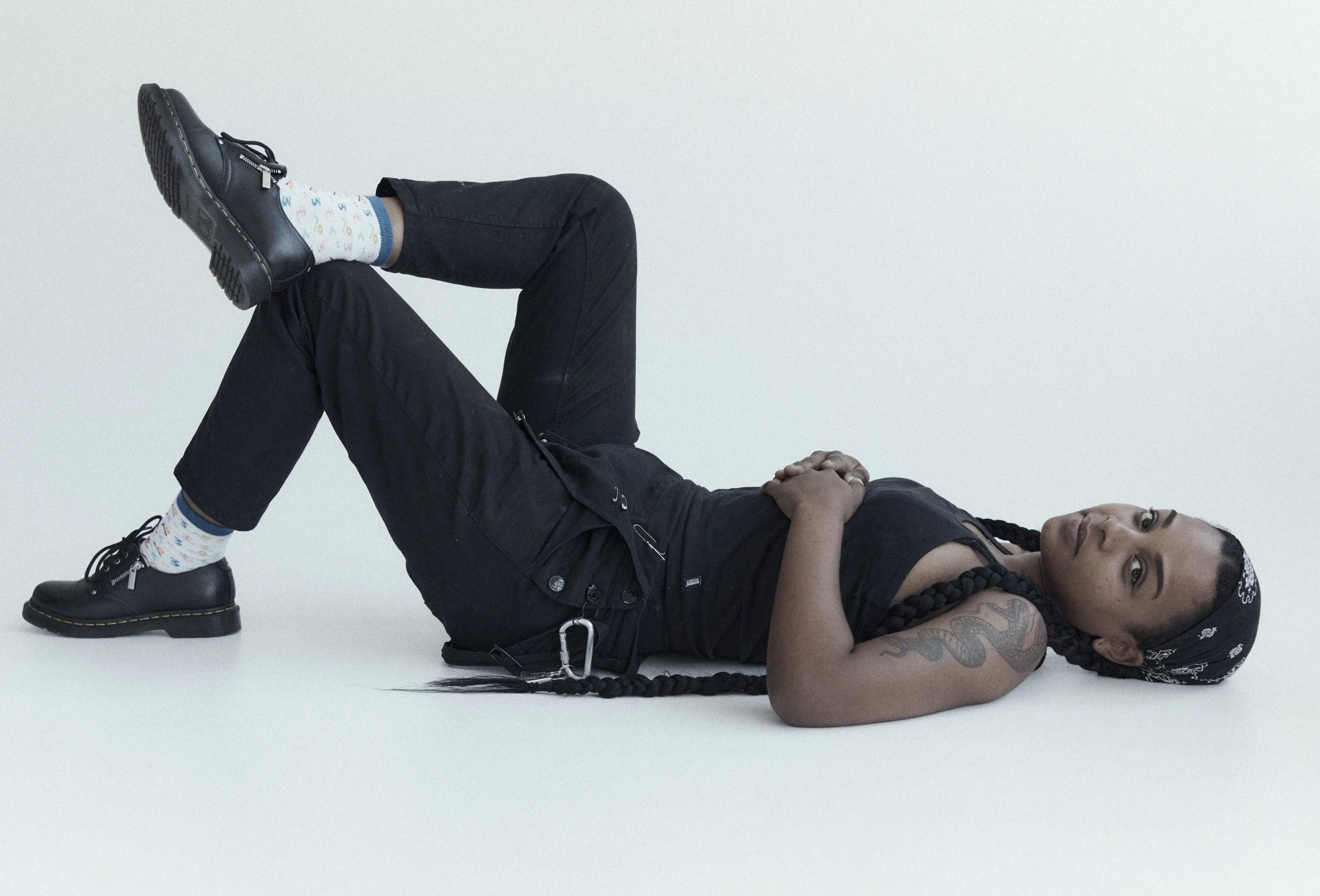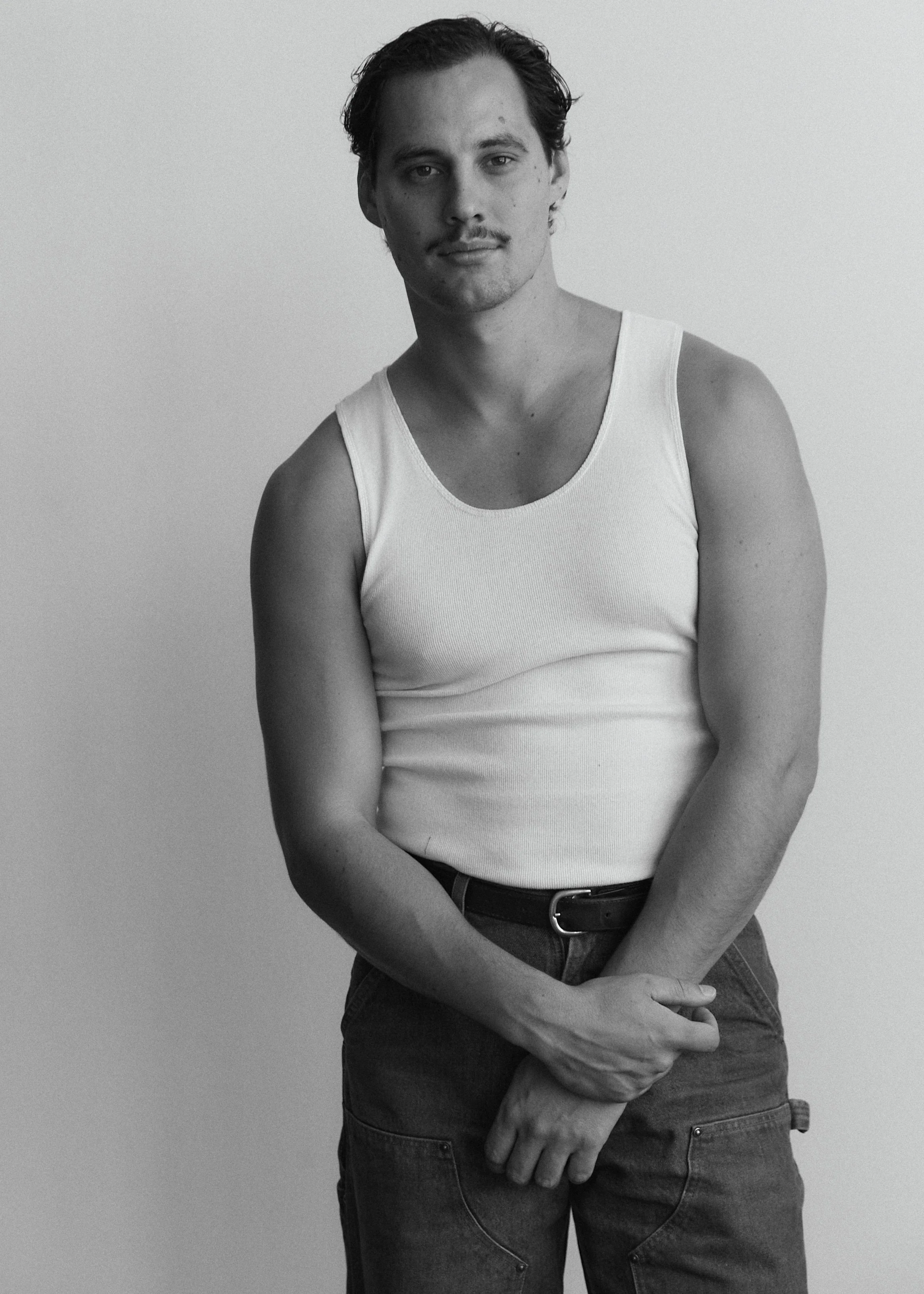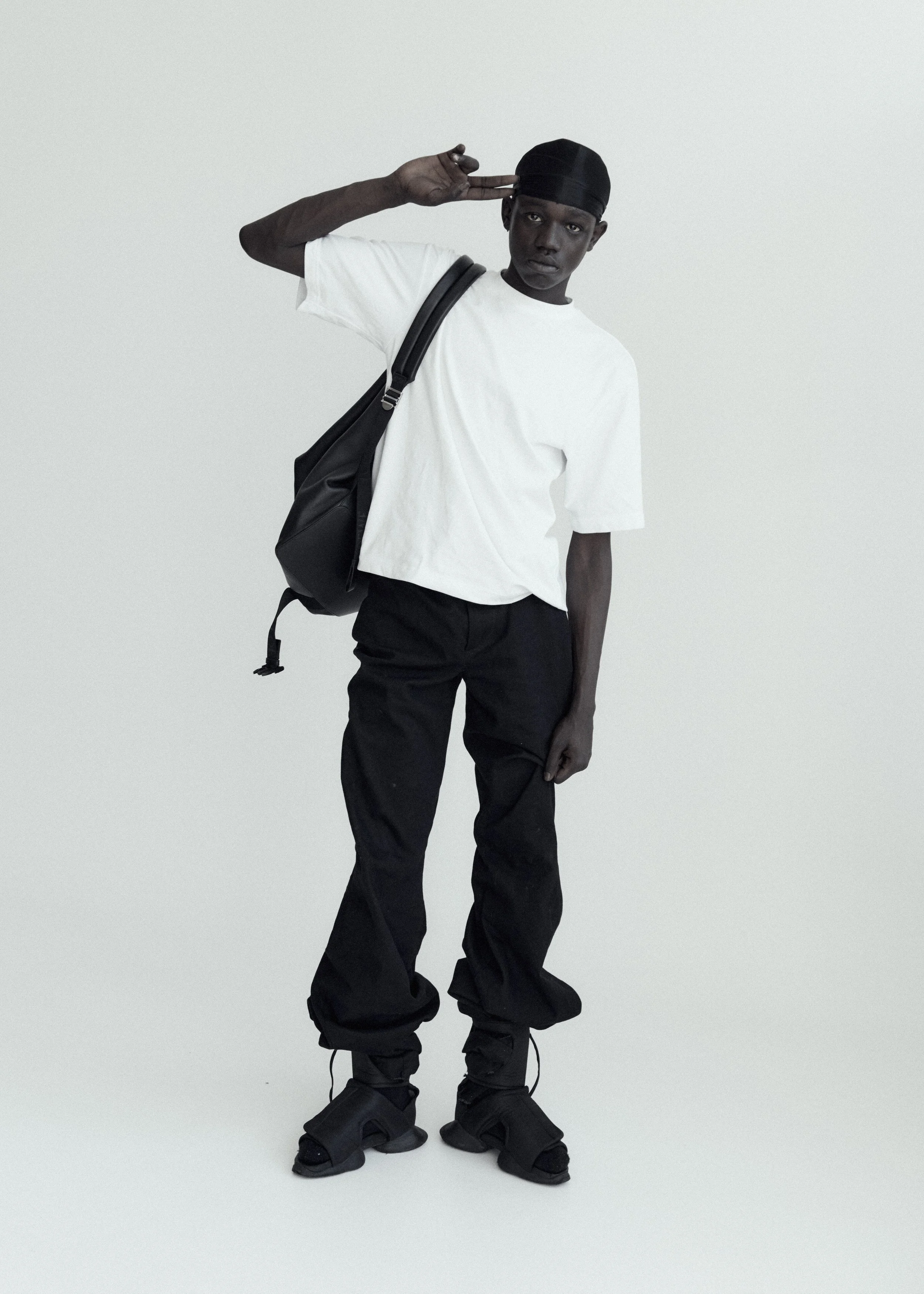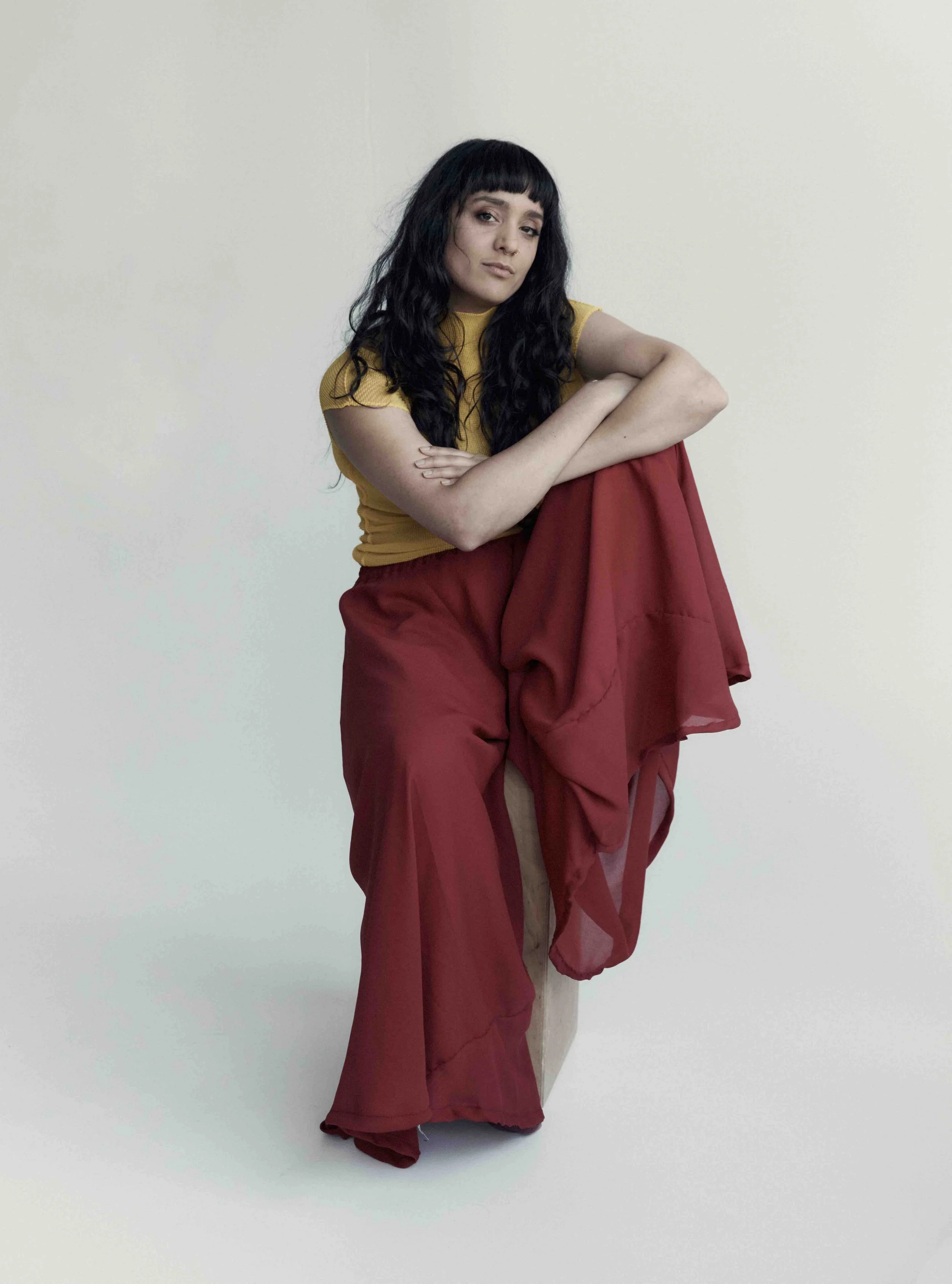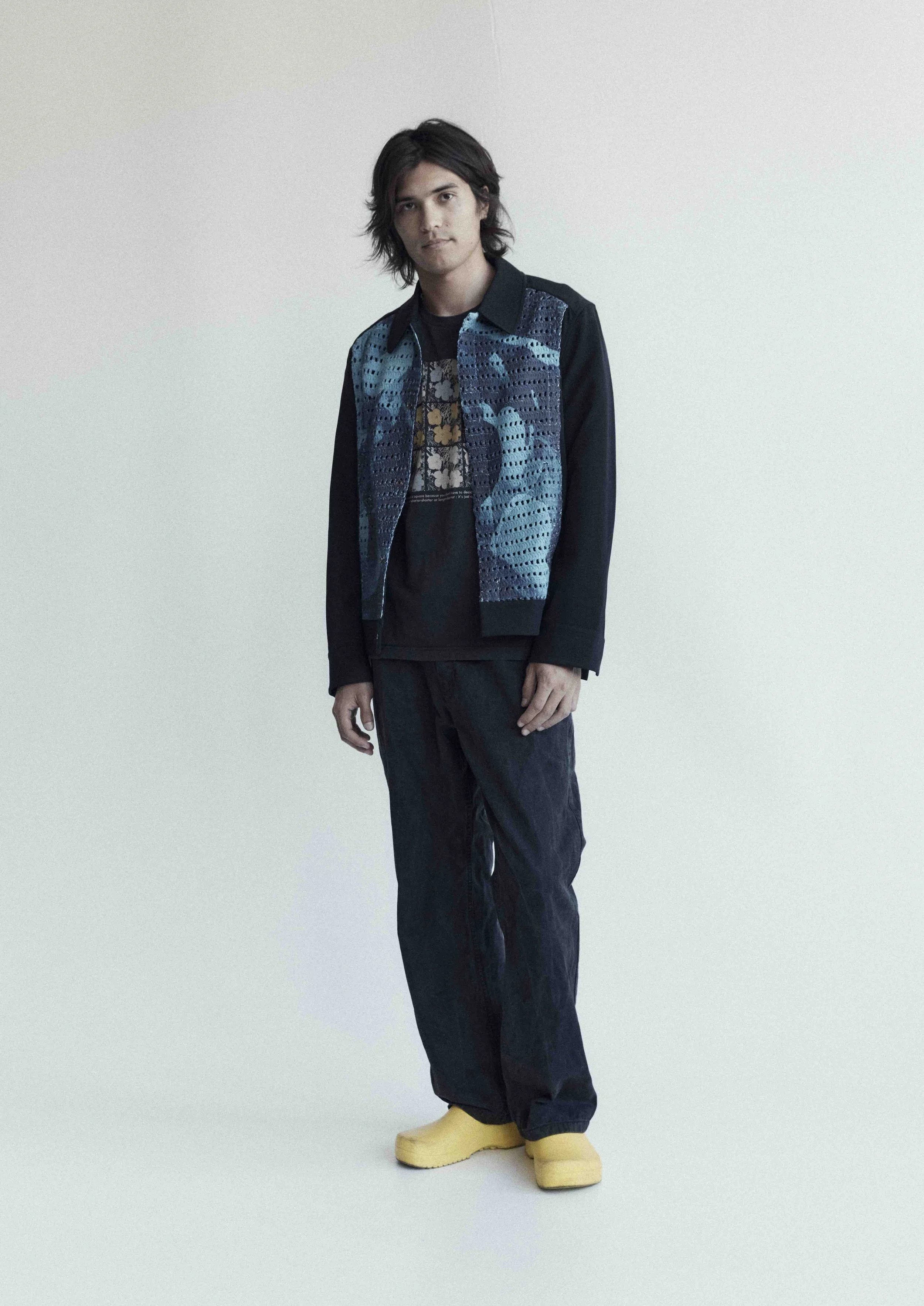The New Vanguard
Photography by Hannah Scott-Stevenson
A-M Journal has unearthed six emerging creatives to watch in 2024. Working in Sydney on Gadigal land and united by a shared passion for challenging conventions, all six are making waves with their fearless exploration of new themes, techniques and mediums, signaling a vibrant future for art that embraces change and diversity. Their work not only captivates but sparks meaningful conversations, marking them as trailblazers in a constantly evolving artistic landscape.
Midori Goto
Midori Goto is a Sydney-based ceramic artist who started her career in childcare before transitioning into the art world. The daughter of Angie Goto, a deaf artist and educator residing in Sydney, Goto has been closely connected to art since childhood. She started working with clay, drawn in by the play- ful, focused yet subconscious space and the ritual of repetition. Her inspiration comes from ecosystems that surround us, the need to nurture both the environment/human emotions and movements. Through her navigation of young and single motherhood, Goto expresses her triumphs and struggles and reaches her audience via sensory expression, tapping into the playful state adults often chase.
Camille Olsen Ormandy
Represented by Olsen Gallery, Camille Olsen-Ormandy specialises in vibrant, fashion-forward portraiture that mirrors her personal style and self-expression.
A graduate of Art & Design UNSW and National Arts School with a BFA, Olsen-Ormandy has collaborated with notable brands such as Mecca Cosmetica, Aje and MOSS Foundation, adding her fresh artistic flair to various projects.
Orson Heidrich
As a mixed media, contemporary artist, Orson Heidrich’s work spans various platforms and mediums; from con- temporary photography and moving images to modern, industrial sculpture and technical installation. His practice explores the relationship between art- ist and industry through the sourcing, fabricating and manipulating of varied media, both physical and digital. His works are forged through collaboration with industrial networks and the wider community. Heidrich is the recipient of international scholarships and residencies, and he has worked extensively, installing artworks for internationally recognised galleries, museums and schools
Odell Mun
Ethiopian-born, Sydney-based Odell Mun is an up-and-coming fash- ion designer and model. An ardent believer in the power of art, Mun defines creativity as ‘adding mean- ing to a meaningless world’. From styling, sewing and modelling to con- necting with his community, Mun’s multiple art forms are a pursuit of his innate values – crafting mean- ing to create impactful moments. Mun is continuing to use his newly acquired platform to not only gain rec- ognition for his creative endeavours but to bring awareness to the lack of diversity in the fashion industry. While focusing on his own blossom- ing career, he’s actively encouraging young creatives of diverse back- grounds.
Monica Rani Rudhar
Monica Rani Rudhar works across video, performance and sculpture. Born to Indian and Romanian migrant parents, her work speaks to longing and loss as she navigates the cul- tural disconnection that stems from the complexities of her multi-racial ethnicity. Rudhar’s work is delicately personal and takes the shape of a restorative autobiographical archive that seeks to record her own histories, allowing these stories to exist permanently – unlike those passed down orally from her family, which remain fragmented. Her practice at- tempts to restore familial histories, traditions and rituals that have been dispersed by migration and draw on the labour required to move past the barriers that stand in the way of re- forging these connections.
Remy Faint
Remy Faint is an emerging artist whose practice is motivated by the desire to expand languages of paint- erly abstraction by examining its global histories. While often referencing collection-based objects and materials specific to his Chinese heritage, Faint’s works mediate cross-cultural and material frameworks to explore themes surrounding exchange, visibility and hybridised artistic production. For example, his use of silk as a painterly medium and the form of the folding screen are cited as spatial tools and transcultural motifs in various installation works. While Faint has often reinstated the screen’s historical function as a bar- rier, divider or structural device, this cultural referencing coincides with physical acts of assembling, repurposing and combining various materials in his studio.

